The Montsià mountain range is considered the third most important natural area in the Ebro Lands after the Ebro Delta and Els Ports. It is a space included in the Natura 2000 and in the network of areas of natural interest in Catalonia.
Today it is a mountain range widely explored by nature lovers, climbers, hikers, runners and mountain bike lovers. Despite being a space frequently visited by tourists, today the mountains provide us with a lot of information about our past and, over the centuries, the use that has been made of this space has changed considerably.
The Excursion to the Foradada del Monstià is full of life. In the past, both the current PR83 and the GR92 were used since the times of the Christian reconquest by all those who wanted to cross the mountains to go from La Ràpita to Freginals, as well as those people who had their main work activity in the mountains, where they lived, They went to look for firewood, water, lime, coal or simply to take the flocks from one side of the mountain to the other.
Geologically, the origin of the mountain range dates back to about 25,000,000 years, a time when the Alpine orogeny as well as that of the Pyrenees also occurred. Most likely, the Sierra del Montsià and the Sierra de Godall must have been part of the same mountain block that was subsequently separated, creating the Ulldecona foia thanks to the movement of the tectonic plates and the division of the mountain ranges by a fault.
The itinerary in the Foradada del Montsià can start either from the La Mundana Parking https://maps.app.goo.gl/a85RNmuiZLvbYqQG7 or from the Cocó de Jordi Parking https://maps.app.goo.gl/ 11K4Dj1pMzbTMhNR6 . Depending on the time of year when we dp the itinerary, we may find the barrier that limits access to the interior of the mountain range.
Without a doubt, autumn, winter or spring, if they are not very hot days, can be excellent days to climb to the top of Foradada. Water, good footwear and comfortable clothing are always very important depending on the time of year.
If we start the route in Cocó de Jordi we have about 8 km of total route with about 450m of elevation gain. Here we leave you a link of how we recommend doing the itinerary: https://es.wikiloc.com/rutas-senderismo/la-foradada-13259391
The route can be done without any problem in noon. However, if we intend to do it with a guide or with stops to read the interpretive signs or researching the species we can find, we can spend the entire day.
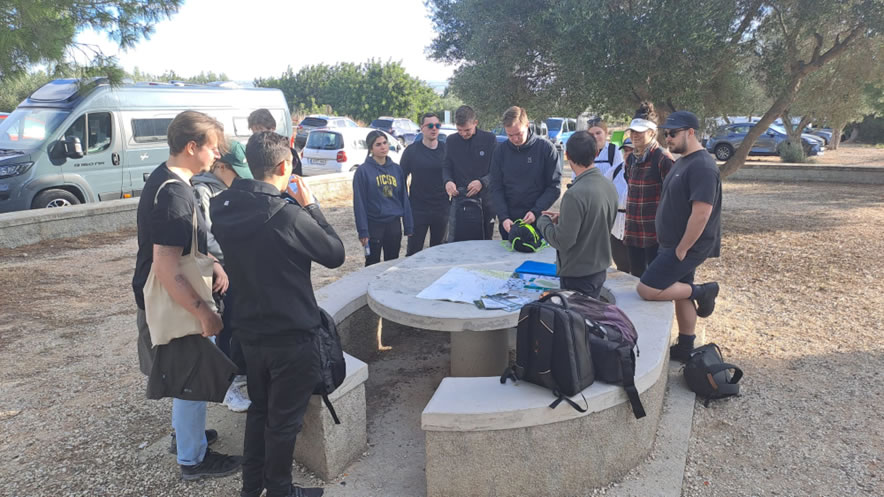
Would you like to do the Foradada route?
Points of interest on the Foradada route:
-
Lime kiln:
In the past, lime kilns were dry stone constructions in order to produce slaked lime, a product prior to cement and used as cement or mortar to join limestone in all types of constructions. The process consisted of taking advantage of the relief of the mountain range to make a hole and cover it with calcareous rocks. Afterwards, about 700/800 bunches of evergreen oak were used per firing and the entire stone was burned for 80 hours at 1,000ºC. Once the smoke from the pile changed color, it indicated to us that it was cooked and therefore all the cooked lime matter could be removed. Apart from construction, quicklime was also used to whitewash walls or as a disinfectant.
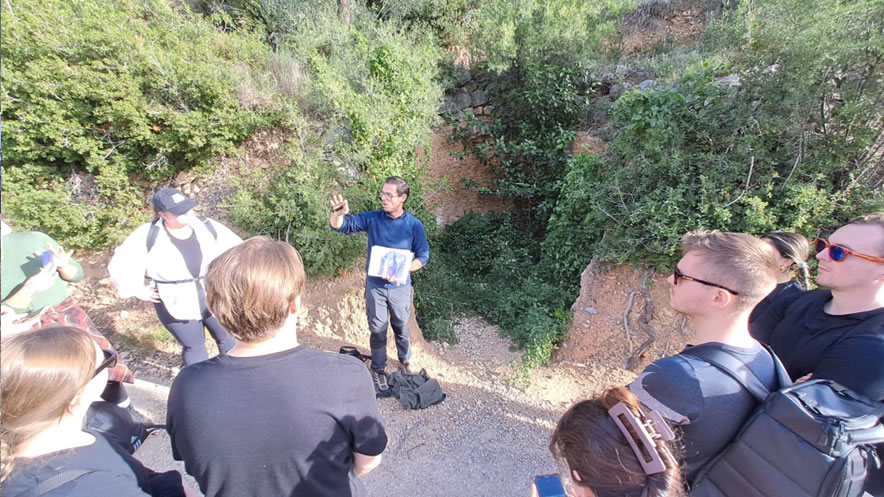
-
Burgar Forest and Springs
The Burgar forest is one of the few leafy evergreen oak forests that remain virgin in the mountains. The fact that it is an area to take a rest to watertrough the flocks meant that it was prohibited to make de most of the forest since ancient times and that is why it is preserved in perfect condition. Holm oaks or evergreen oaks are a vital element for our ecosystems since they have the ability to regulate temperatures, protect the soil, in addition to providing housing, shelter and food for most of the migratory or sedentary birds of the mountains.
The Burgar source is originally from a change between limestone and marl that, thanks to a fault, has caused rainwater to emerge right in this place, providing crystalline, very clean, carbonated waters with a very low level of nitrates. A place that makes possible the reproduction of amphibians such as the palmate newt, which has the Sierra del Montsià as the southern limit of its geographical distribution throughout Europe.
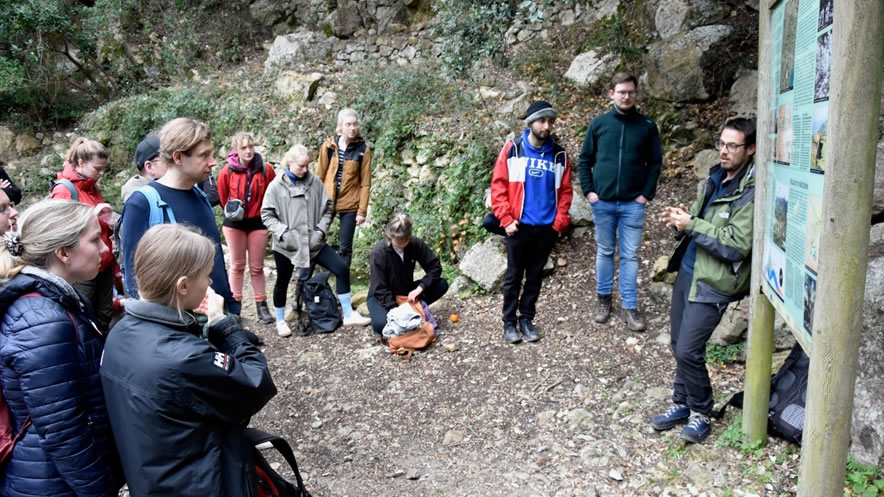
-
Mata-redonda
The Mata-rodona farmhouse was the last one in the mountains until 1961. As in most of the farmhouses in the Ebro lands, after the frost of 1956, most of the people who lived in the mountains abandoned their homes and a great change was produced, not only socioeconomic but also ecosystemic in all the mountains of the surroundings. Life in the farmhouses was governed by very hard daily work in the fields, fetching water, feeding the flocks, collecting firewood for home, producing coal and slaked lime among other tasks. The peasants worked from sunrise to sunset, it was a hard pace of life, but at a different rithm than today. This exodus from the mountains, because communications were better in the plains and on the coast, the presence of commerce and the arrival of tourism to our country has made the mountains today an uninhabited space and many previously threatened species such as the evergreen oaks can recover the space that humans took from them in the past. On the other hand, this abandonment of the mountains has caused the herds to disappear and therefore many species such as raptors or scavengers have begun to decline in our region.
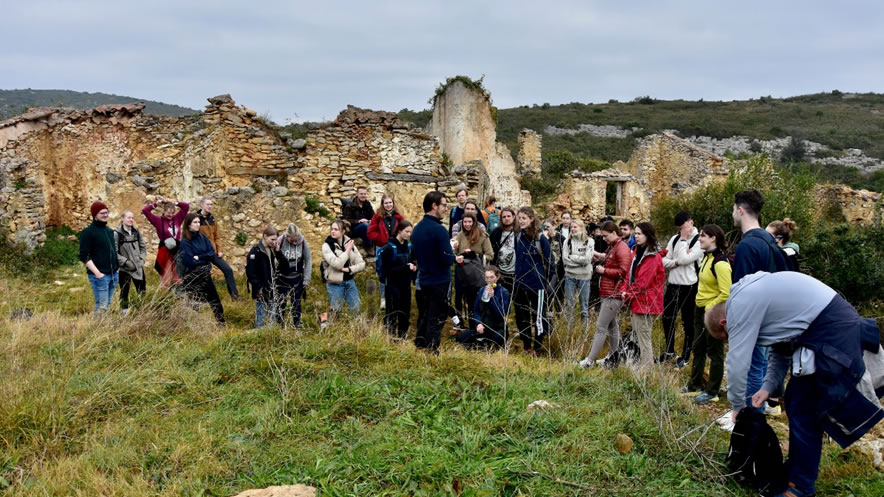
-
The peak, La Foradada
After a steep climb we reach the top of our route, la Foradada. The arch at the summit with 360º views will not leave anyone indifferent. We have an excellent panoramic view of the Ebro Delta at our feet, the Sierra de Cardó on the other side of the Ebro and the Els Ports massifs behind us. Without a doubt the best viewpoint in our lands.
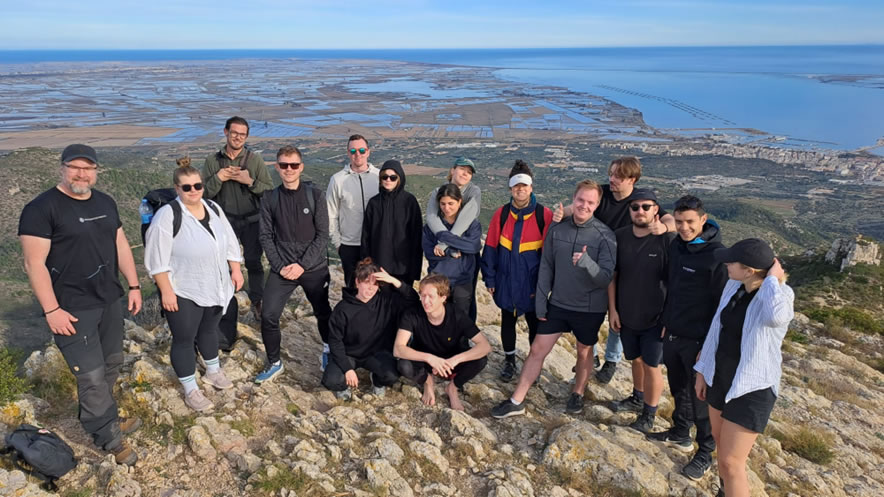
As tradition dictates and after this last great effort as good hikers, we must take a photo at the Foradada arch. Depending on the time of arrival at the summit, the sun’s rays give us golden tones that pass through the hole at the top.
If you do the route in winter, any time of day is good to do it. However, if you do the route in spring or autumn, it is better to avoid the strongest hours of sunshine and do it early or late.
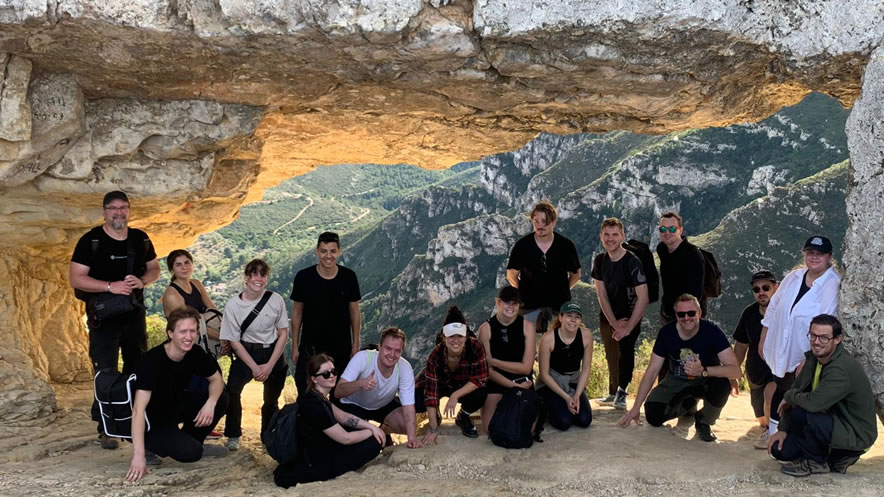
Would you like to do the Foradada route?
Video of the impressive views




0 Comment